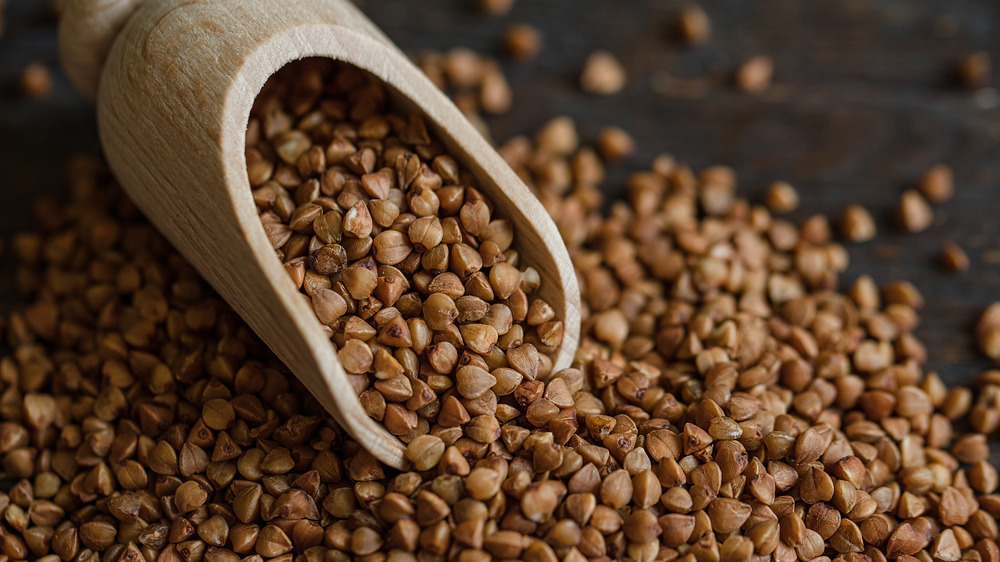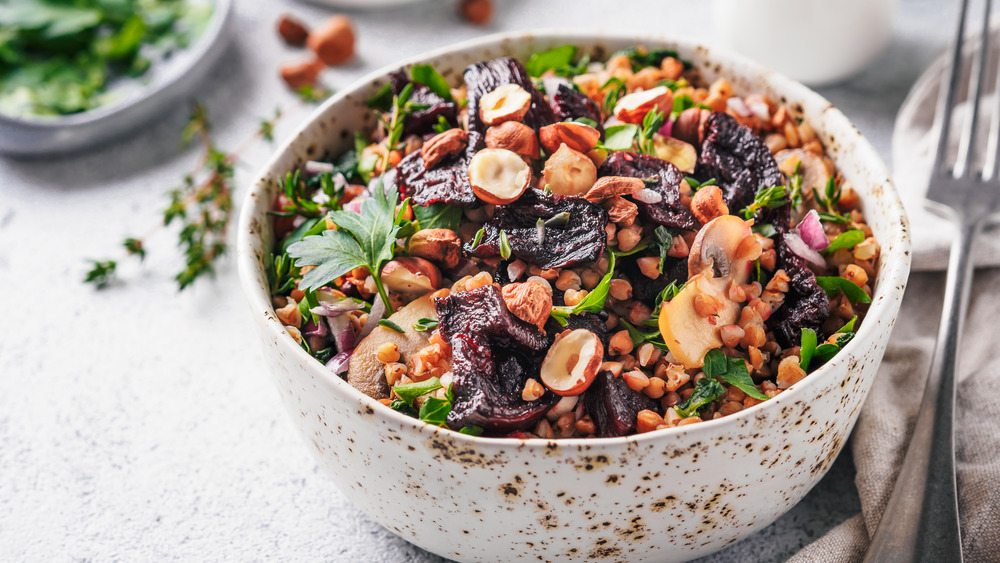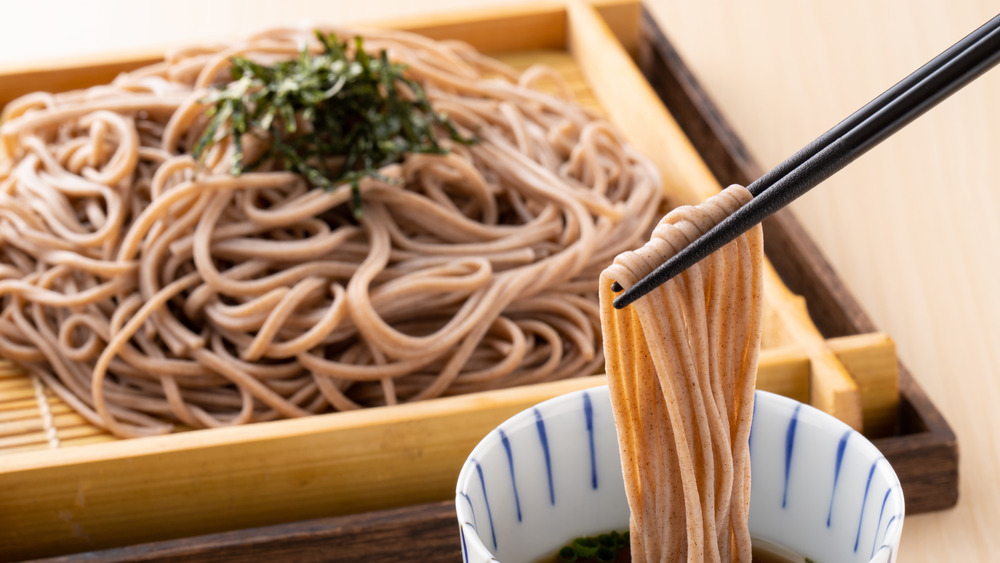You've Been Cooking Buckwheat Wrong The Whole Time
If you've been experimenting with different grains to give the usual white rice and pasta a break from the spotlight, you might have come across buckwheat. Mashed spoke with Palak Patel, a chef at the Institute of Culinary Education, to learn how to best prepare this delicious grain. Even though it flaunts the word "wheat" in its name, Patel explains that "buckwheat is not a wheat, but rather actually a wonderful gluten-free substitute [and] is considered a seed." She describes it as having a nutty flavor and soft interior, which makes it a versatile option to choose when cooking.
Not only does it have a great taste, but it also has a number of nutritional benefits that make it an excellent choice to add to your diet. According to Healthline, it contains a number of antioxidants that are associated with decreased inflammation. It is also associated with other health benefits including a lower risk of heart disease and high blood pressure, per Healthline. On top of that, buckwheat packs in plenty of fiber, protein, and minerals. Pass the buckwheat, please!
Why is buckwheat hard to cook well?
Buckwheat doesn't quite cook like rice and the preparation can result in an unpleasant texture if it isn't done right. Patel notes, "It can be gummy and sticky if overcooked, but if this happens it can be used to make a gluten-free rice pudding." We're happy to avoid waste with this trick to serve buckwheat when it's accidentally cooked too long!
Patel points out that the issue with cooking time comes down to the tough exterior, which she describes as similar to farro. Since buckwheat is smaller than farro, Patel notes "it takes less time to cook." Not only can it be overcooked, she says, "if not cooked enough, it can be chewy and tough." There is a fine line for the perfect cook time but buckwheat is definitely worth making. When prepared correctly, Patel describes, "the grains are separate and fluffy" which sounds like the perfect accompaniment to our dishes.
What's the elusive trick to cook buckwheat?
The grain can be prepared in an instant pot or on the stove. For extra savoriness, Patel recommends, "the nutty flavor can be amplified by toasting the grains in a dry pan before cooking." Patel advises using a ratio of 1 cup of buckwheat to 1 ½ cups of liquid (water or broth are fine). She suggests rinsing the grain and even soaking it prior to cooking for easier digestion. Once everything is measured, Patel says, "Heat liquid, aromatics, and fat (butter or oil) with salt and bring to boil." Then, add the buckwheat, lower the heat, and cover your pot. Patel calculates about 15 minutes of simmering before you should turn off the heat.
If you are hesitant to try cooking with the grain due to the ease of over or undercooking it, Patel suggests, "Start with buckwheat flour that's easy to cook and bake with." Use it for pancakes, bread, and muffins for an instant upgrade. When you're ready to cook with the grain, she says, "You can replace any rice or quinoa in your recipes with buckwheat." Try a grain bowl with roasted vegetables and legumes, or use it for a unique twist to your breakfast porridge. You can even try soba noodles, which are made with buckwheat flour for an alternative to pasta. Check the labels if you eat a gluten-free diet because some wheat flour might be added (via Verywell Fit). This grain can be a new option for your favorite classics.


